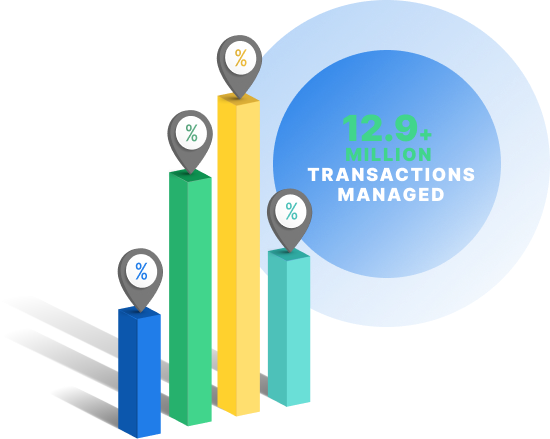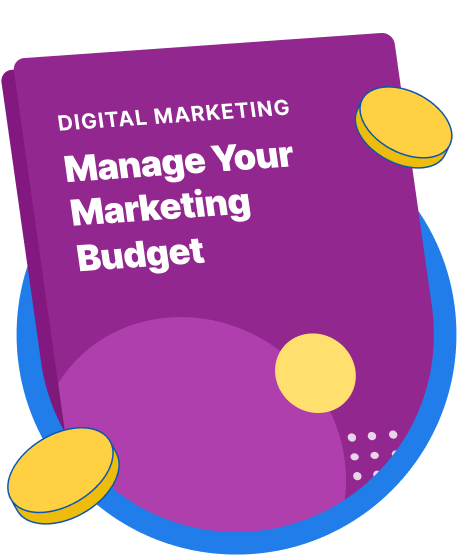-
 Published: Apr 7, 2022
Published: Apr 7, 2022
-
 7 min. read
7 min. read
-
 Matthew Gibbons
Matthew Gibbons Lead Data & Tech Writer
Lead Data & Tech Writer
- Matthew is a marketing expert focusing on the SEO & martech spaces. He has written over 500 marketing guides and video scripts for the WebFX YouTube channel. When he’s not striving to put out some fresh blog posts and articles, he’s usually fueling his Tolkien obsession or working on miscellaneous creative projects.
Have you heard of the scientific method? If so, you know that the scientific method is a helpful process for streamlining discovery and experimentation in the science field. But what you may not know is that a similar process exists in marketing: The plan-do-check-act (PDCA) cycle.
Whereas the scientific method is used to further scientific discovery, the PDCA process is used to further the development of new marketing strategies. You can use it to improve the way your business functions and earn more revenue in the long term.
But what is the PDCA method, exactly? Below, we’ll explain this process in more detail, so keep reading to learn more. Then subscribe to Revenue Weekly, our email newsletter, to get more digital marketing tips from the agency with over 28 years of experience!
What is the PDCA method?
The PDCA cycle — which stands for “plan-do-check-act” — is a model used to streamline basic business processes.
This method is so widely applicable that it can’t be narrowed down to a single area of business. But marketing is one of the best places to use it.
From a marketing perspective, then, PDCA can be viewed as a process you can use to test and develop better marketing strategies for your business.
Breaking down the PDCA cycle
As you probably guessed from the name, the PDCA cycle consists of four steps: Plan, do, check, and act. Each of those steps is essential to the process, but it can be hard to figure out what they mean when they’re boiled down to a single word.
So, what does each step in the process mean? Keep reading to find out!
1. Plan
The first step of the PDCA process is to plan. In the planning stage, you figure out what you intend to do and what results you want it to drive.
During this stage, you should ask yourself questions like:
- What result do I want to drive?
- What methods will produce that result?
- What will I do to execute those methods?
It’s important to come up with a clear and concise plan before you move on to the next step. That doesn’t mean creating a vague goal and then getting to work. On the contrary, you should make your plan as precise as possible.
A good way to do that is to use SMART goals. SMART stands for:
- Specific
- Measurable
- Actionable
- Relevant
- Time-based
Your goals should be clearly defined for each of those parameters before you start putting them into action.
2. Do
Once you have a plan, it’s time to carry out your plan. That’s what the “do” stage is all about. However, you shouldn’t put your plan into action on a large scale just yet. For this step of the process, you just want to do it on a small scale and in a controlled environment.
Earlier, we made a comparison to the scientific method. To return to that analogy, think of this as the experimentation stage. If a scientist wants to test a new medication, they don’t start off by sending it out to the whole population. The first time they use it, they do so in a lab, likely on non-human subjects.
Similarly, the first time you put your marketing plan into action, you should do so on a limited scale, closely watching to see what happens. This is an experiment, so treat it as one. For example, you could run an A/B test for two paid ads.
3. Check
The third step in the PDCA process is to check your results. When you test your plan, it might work, or it might not. And if it does work, there may be some unexpected results or other factors you didn’t anticipate. The “check” step is meant to help you analyze these factors.
In most cases, marketing efforts will produce results in the form of different metrics you can track. Conversion rate, traffic, and return on investment (ROI) are all common marketing metrics you want to analyze (depending on the type of marketing you tested).
When you analyze your metrics, you’ll see what results your efforts produced. If your experiment was successful, that’s good news. And if there are issues with it, this step exists to help you find them and correct them going forward.
For instance, maybe you see that your ad has a low click-through rate (CTR), so you optimize that.
4. Act
The final step of the process is the “act” stage. This is where you put your plan into action on a larger scale. If the “do” step was equivalent to testing a new medication in a lab, the “act” stage is equivalent to releasing that medicine to the public.
In marketing, you’re working with marketing materials, and the people receiving them are potential customers. So, the “do” step was where you tested a new marketing material on a small audience, while the “act” step is where you start implementing it into your large-scale campaigns.
If you learn that an email has a low open rate in the previous step, for example, you could work to make the subject line more compelling and then start sending it out to more users.
Time to Level Up Your Sales
Our long list of services helps you grow every aspect of your business with marketing strategies that are proven to increase bottom-line metrics like revenue and conversions.
In the past 5 years, we’ve managed more than 14.9 MILLION transactions across our client base.

The PDCA cycle applied to marketing
We’ve covered how the PDCA method works in general terms, but what does that look like in practice? To answer that question, let’s walk through a hypothetical marketing example.
Let’s say your company offers pest control services. Until now, you’ve been focusing your paid ads on the speed of your services. But instead of focusing on your speed, you think focusing on your reliability may lead to more conversions.
Enter the PDCA cycle. You walk through each step to test your idea:
Plan
You start by laying out your plan for the paid ad idea. You intend to run a paid ad that doesn’t talk about how fast your services are, but instead focuses on how reliable your business is.
You sketch out the ad you want to test. You then establish your main goal — you want your new ad (which focuses on reliability) to have a higher conversion rate than your existing ad (which focuses on speed) over the course of a week.
Do
With your plan in place, you create and launch your new ad. However, you don’t replace the existing ad yet. Instead, you use A/B testing to run them together and track them for one week to see which one comes out with a higher conversion rate.
Check
At the end of the week, you look at the results of your A/B test. You find that the new ad did exactly what you hoped, resulting in a much higher conversion rate than the previous ad. You look into some other metrics as well, but don’t see any unintended side effects.
Act
With the test having gone well and your analytics coming back positive, you go ahead and phase out your old ad, replacing it with the new one. As a result, you start driving more conversions for your business and earning more revenue.
Over 90% of WebFX clients continue partnering with us into year 2 of their campaign.We foster and form long-term partnerships so that your business has long-term results.


Partner with WebFX to optimize your PDCA process
Ready to start using the PDCA method in your marketing? If so, you don’t have to do it alone. WebFX would love to help you drive bigger and better results for your marketing, and since we’ve earned over 1,100 testimonials from our clients over the years, you can rest assured we know what we’re doing.
With our digital marketing services, you’ll get help optimizing numerous strategies to boost your incoming revenue. We’ll handle all the work for you, but we won’t leave you in the dark about what we’re doing — you choose your level of involvement with your marketing.
To get started with us, just call 888-601-5359 or contact us online today!
-
 Matthew is a marketing expert focusing on the SEO & martech spaces. He has written over 500 marketing guides and video scripts for the WebFX YouTube channel. When he’s not striving to put out some fresh blog posts and articles, he’s usually fueling his Tolkien obsession or working on miscellaneous creative projects.
Matthew is a marketing expert focusing on the SEO & martech spaces. He has written over 500 marketing guides and video scripts for the WebFX YouTube channel. When he’s not striving to put out some fresh blog posts and articles, he’s usually fueling his Tolkien obsession or working on miscellaneous creative projects. -

WebFX is a full-service marketing agency with 1,100+ client reviews and a 4.9-star rating on Clutch! Find out how our expert team and revenue-accelerating tech can drive results for you! Learn more
Try our free Marketing Calculator
Craft a tailored online marketing strategy! Utilize our free Internet marketing calculator for a custom plan based on your location, reach, timeframe, and budget.
Plan Your Marketing Budget

Maximize Your Marketing ROI
Claim your free eBook packed with proven strategies to boost your marketing efforts.
Get the GuideTry our free Marketing Calculator
Craft a tailored online marketing strategy! Utilize our free Internet marketing calculator for a custom plan based on your location, reach, timeframe, and budget.
Plan Your Marketing Budget





